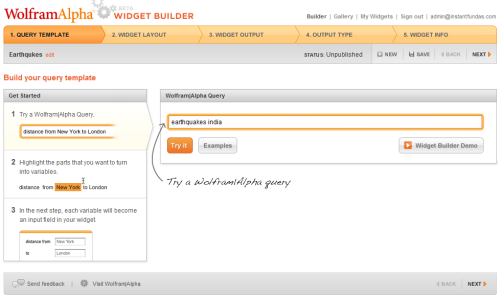Analytical search engine Wolfram Alpha today started offering web users widgets that they can put on their sites and provide visitors with customized computational results on their own websites.
The widgets are free and let users add mini applications to their websites, blogs and social networking pages. There are hundreds of readily available widgets on the Wolfram Alpha’s widget gallery. Examples of these include, Sunrise calculator, distance between places calculator, and some pretty interesting ones like bordering countries finder.


But that’s not all. Users can build their own widgets from any search query and put them on their site. Isn’t that something? To be able to bring the vast and amazing computational power of Wolfram Alpha to your website.
Building widgets is pretty simple. You start with a query, for example “earthquakes India”.

Then highlight “India” and declares it as variable. Then choose which variable it represents. In this case it is a place.

In the next step, you get a layout editor where you can add additional text, choose the color of your widget and add additional choices to your widget's popup menus. In the following step you get to choose which part of Wolfram Alpha's results will appear in your widget. Finally you get three different embedding options for your created widget – iframe, light-box or pop-up.
Once you publish the widget it becomes available in Wolfram Alpha's widget gallery and others can use it too. Here is the widget I created. You can try it out.

Comments
Post a Comment